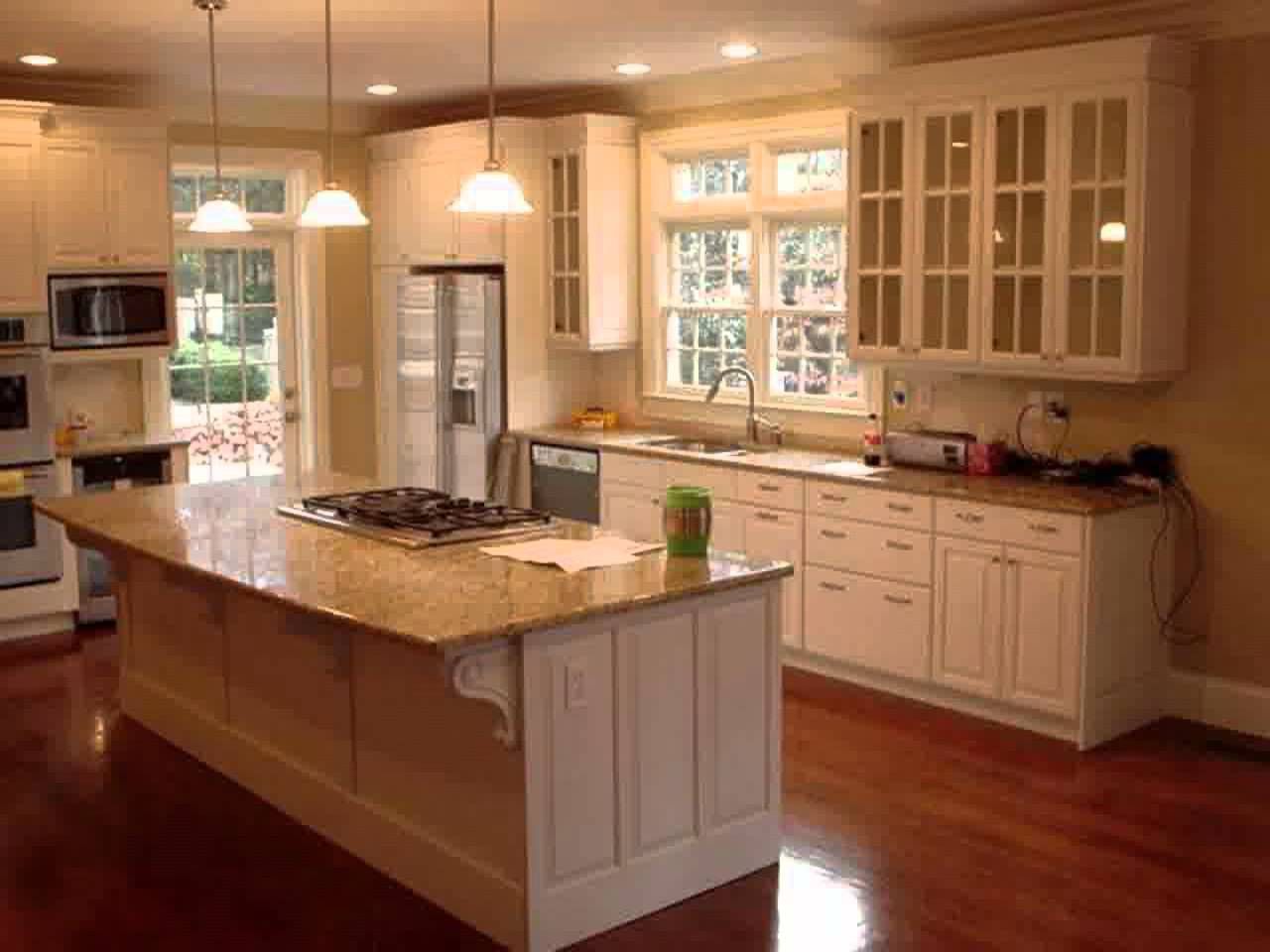Imagine this: you’re finally ready to give your kitchen a much-needed makeover. You’ve dreamed of sleek, modern cabinets, perhaps with stylish hardware and soft-close doors. But then the dreaded question arises: will you have to rip up your existing flooring to achieve this kitchen cabinet dream? Your heart drops – replacing the flooring seems like a big, dusty, and expensive endeavor.

Image: interior.tn
Fear not, fellow kitchen remodelers! While it’s true that replacing cabinets often leads to some floor disruption, it isn’t always a necessity. In this comprehensive guide, we’ll dive into the factors that determine whether you can achieve your cabinet dreams without touching the floor. We’ll explore the nuances of flooring types, cabinet installation techniques, and even address common concerns about uneven floors and potential damage. By the end of this article, you’ll be empowered to make the right choices for your kitchen renovation, saving time, money, and maybe even some gray hairs.
Understanding the Connection: Flooring and Cabinets
The biggest factor influencing the relationship between cabinets and floors is the installation type. Let’s break down the key considerations:
-
Floor Level: Traditional kitchen cabinets are typically installed at a standard height, which means the floor needs to be level for a seamless look. If your current floor is uneven, the cabinets might sit awkwardly, leaving gaps or creating a wobbly effect that’s both unattractive and potentially unsafe.
-
Cabinet Installation Method: The installation method for your cabinets plays a big role. If you’re opting for floating cabinets, which are mounted directly to the wall (common in modern kitchen designs), you have more flexibility. However, if your cabinetry relies on base cabinets, which sit directly on the floor, maintaining floor level becomes crucial.
-
Flooring Material: The type of flooring you have can impact how well it integrates with new cabinets. If you have hardwood flooring, you might have to consider refinishing it to match the new cabinets. Laminate, tile, and vinyl flooring tend to be more flexible in terms of compatibility.
When You *Can* Replace Cabinets Without Replacing the Floor
Here are several scenarios where you can achieve your kitchen cabinet goals without a floor overhaul:
- Minimal Floor Unevenness: If your existing floor has only minor inconsistencies, you might be able to address them with shims (thin pieces of wood used for leveling) during cabinet installation. A skilled installer can often compensate for minor floor imperfections, but don’t underestimate the challenge.
- Floating Cabinets: As mentioned earlier, floating cabinets offer more flexibility because they’re not directly attached to the floor. This freedom allows you to achieve a modern aesthetic without worrying about floor discrepancies.
- Floor Removal Under Cabinets: If your kitchen cabinets are already well-worn but your floor is in decent condition, you might choose to remove the base cabinets and replace them without touching the flooring. This can be a cost-effective option if the floor is still in good shape or if you’re comfortable working with a somewhat disjointed look until you’re ready to tackle the floor.
- New Flooring Before Cabinets: If you’re planning a major kitchen transformation, the most efficient approach is to install new flooring before you put in new cabinets. This ensures a seamless integration between your cabinets and flooring, and eliminates the worry of uneven surfaces.
When You *May* Need to Replace the Floor
It’s crucial to be realistic about your renovation goals. Here are situations where replacing the floor is likely the best course of action:
- Significant Floor Unevenness: If the floor has deep dips, noticeable bumps, or a significant slope, it’s unlikely you can successfully level the cabinets without addressing the floor.
- Damaged Flooring: If your existing floor is cracked, scratched, or water-damaged, it’s best to tackle the floor before installing new cabinets. Attempting to install cabinets on damaged flooring can lead to problems with stability and aesthetics in the long run.
- Outdated Flooring: If you’re going for a dramatic kitchen makeover, replacing the flooring alongside new cabinets can create a cohesive and fresh look. It can also create a more unified design aesthetic.

Image: ddcountermeasures.com
Expert Tips for a Seamless Transition
- Consult a Professional: Always engage a skilled contractor or kitchen designer for a professional assessment of your kitchen and flooring.
- Measure Twice, Cut Once: Accurate measurements are crucial for successful cabinet installation. Make sure to measure carefully and account for potential spacing needs.
- Address the Floor First: If you suspect any significant issues with your floor, prioritize addressing them before attempting cabinet installation. This could involve leveling, refinishing, or even replacing sections of the floor.
Can You Replace Kitchen Cabinets Without Replacing Floor
In Conclusion: Your Kitchen, Your Choices
Renovating your kitchen can be a rewarding but sometimes complex journey. When it comes to your cabinets and flooring, the decision to replace one or both is entirely yours. By understanding the factors that influence installation and considering your budget, design preferences, and existing flooring condition, you can make the best choices for your kitchen. Remember, your dream kitchen is achievable, and with the right guidance and planning, you can create a space you’ll love for years to come.






